RHS Chelsea 2024 Show Gardens
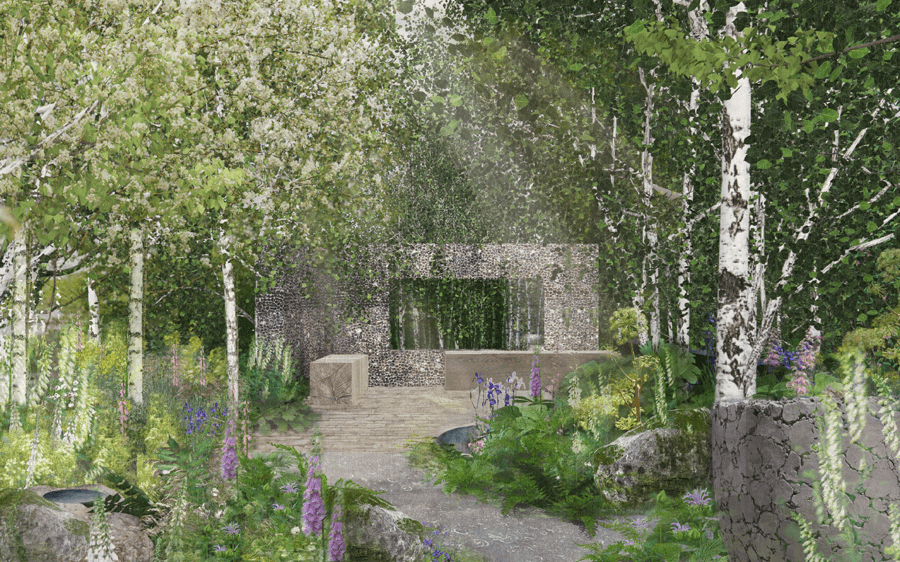 Another rich tapestry of designs and themes will showcase at the 2024 RHS Chelsea Flower Show (21st to 25th May 2024) with organisers promising that this will be the greenest Chelsea yet. Designers will be using eco-techniques and low carbon materials as well as reducing waste at the end of the show, proving that great design and sustainability go hand in hand. Below an overview of the Show Garden category.
Another rich tapestry of designs and themes will showcase at the 2024 RHS Chelsea Flower Show (21st to 25th May 2024) with organisers promising that this will be the greenest Chelsea yet. Designers will be using eco-techniques and low carbon materials as well as reducing waste at the end of the show, proving that great design and sustainability go hand in hand. Below an overview of the Show Garden category.
Muscular Dystrophy UK – Forest Bathing Garden
Designer Ula Maria makes her Chelsea debut with a garden for Muscular Dystrophy UK, (pictured top of page) sponsored by Project Giving Back, showcasing how an immersive, yet accessible garden can offer a place of refuge to patients, their families and clinicians.
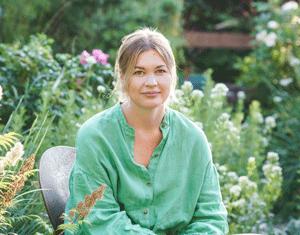 The design of the garden is inspired by the ancient Japanese practice of Shinrin-yoku, which means bathing in the forest. The design incorporates a large random knapped flint wall, chosen for its beautiful texture and a central hub with sculptural flint walls providing shelter for a space to meet and share experiences. Planting is inspired by a birch grove, under-planted with woodland edge style plants. Plants have been selected for their foliage, creating a green tapestry rich in texture and occasional bursts of colour. After the show the garden is to be relocated at the Institute of Development and Regenerative Medicine, Oxford. (left: Ula Maria: credit Rachel Warne).
The design of the garden is inspired by the ancient Japanese practice of Shinrin-yoku, which means bathing in the forest. The design incorporates a large random knapped flint wall, chosen for its beautiful texture and a central hub with sculptural flint walls providing shelter for a space to meet and share experiences. Planting is inspired by a birch grove, under-planted with woodland edge style plants. Plants have been selected for their foliage, creating a green tapestry rich in texture and occasional bursts of colour. After the show the garden is to be relocated at the Institute of Development and Regenerative Medicine, Oxford. (left: Ula Maria: credit Rachel Warne).
The National Garden Scheme
A popular designer at RHS Chelsea, Tom Stuart-Smith makes a welcome return with a garden for the National Garden Scheme, sponsored by Project Giving Back. With an ‘edge of woodland’ theme, the garden has a collection of drought tolerant woodland plants suited to the south east of the UK.
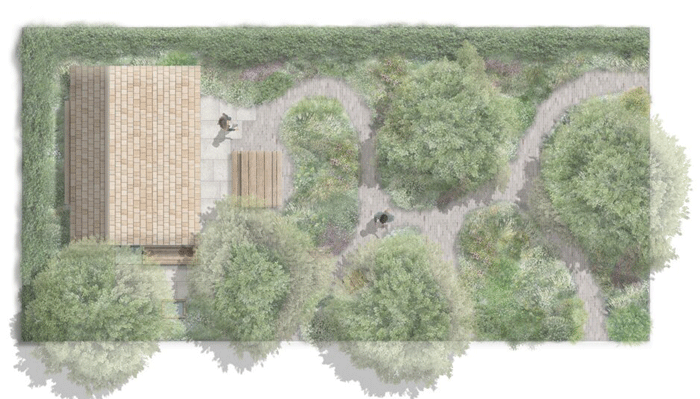 (National Garden Scheme Garden:©Tom Stuart-Smith)
(National Garden Scheme Garden:©Tom Stuart-Smith)
The garden centres on a carbon sink timber hut where visitors and garden volunteers can congregate for tea and cake, synonymous with a National Garden Scheme Garden open day. The style of the garden reflects the charity’s increasing support of community and therapeutic gardens. After the show the garden will be relocated at the new Maggie’s Centre at Addenbrooke’s Hospital, Cambridge.
Water Aid Garden
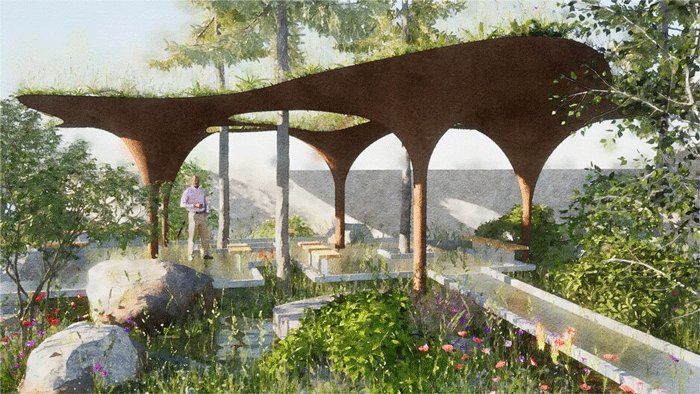 (Water Aid Garden © Tom Massey and Je Ahn)
(Water Aid Garden © Tom Massey and Je Ahn)
Sponsored by Project Giving Back, supporting Water Aid, designers Tom Massey and Je Ahn bring to Chelsea a garden exploring what a UK garden might look like in 50 years. Focus is on sustainable water management and drought tolerant species and contains a central pavilion standing among stunning greenery plants such as Hottonia palustris and Hesperaloe parviflora. Planting is textured and colourful, shifting from denser, wetter lowland areas to sparser, drier upland.
National Autistic Society Garden
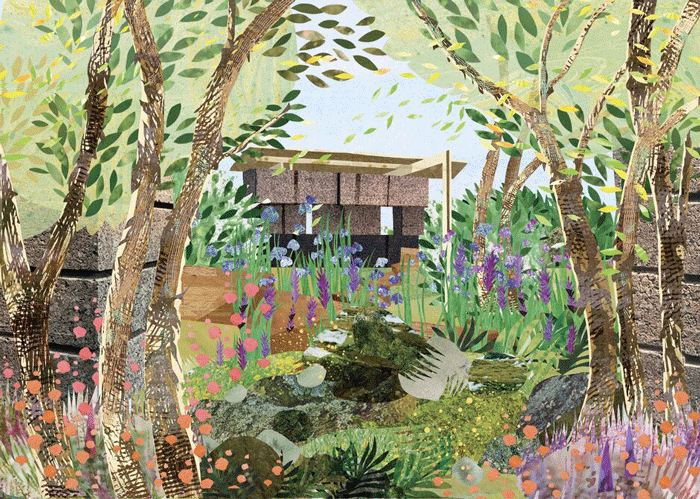 (National Autistic Garden © Sophie Parmenter and Dido Milne)
(National Autistic Garden © Sophie Parmenter and Dido Milne)
Sophie Parmenter and Dido Milne are the designers of this show garden for the National Autistic Society, sponsored by Project Giving Back. The design seeks to capture an autistic person’s everyday experience of the world, using walls of cork to create a series of spaces dedicated to different types of social interaction. A strong ecological ethos runs through the garden, showcasing the circularity of regenerative systems and the interdependent relationship between natural ecosystems and man-made materials. Planting is multi-layered, evolving from wetland meadow to river birch woodland, with vibrant colour palette at its boundary. After the show the garden will go to a National Autistic Society supported living site at Catrine Bank alongside the river Ayr in Scotland.
Terrence Higgins Trust Bridge to 2030 Garden
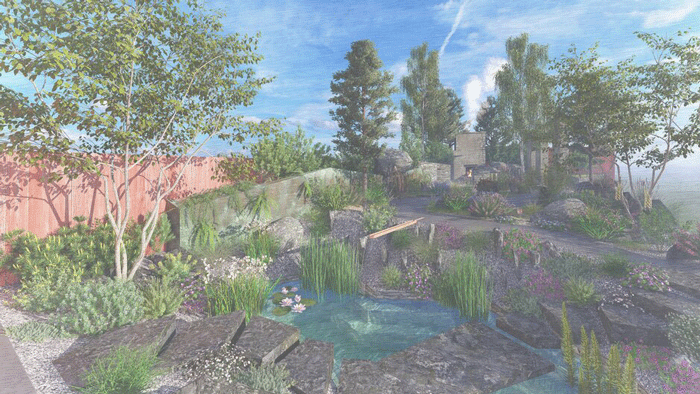 (Terrence Higgins Trust Garden © Matthew Childs)
(Terrence Higgins Trust Garden © Matthew Childs)
Designed by Matthew Childs and sponsored by Project Giving Back, the entrance to the garden is reminiscent of the flooded base of a rejuvenated quarry landscape, with water which rises and falls revealing a monolith of slate stepping stone creating a bridge to the 2030 vision of no new HIV cases. The front of the design shows a crevice garden, taking inspiration from natural areas where plants grow in gaps in rocks. Granite boulders are scattered through the garden, inspired by those found in the slate landscapes of North Wales.
Planting scheme incorporates yellows, key to punctuating deeper tones of purples and reds at the front of the garden and connecting with a palette of green at the rear.
The Octavia Hill Garden by Blue Diamond with the National Trust
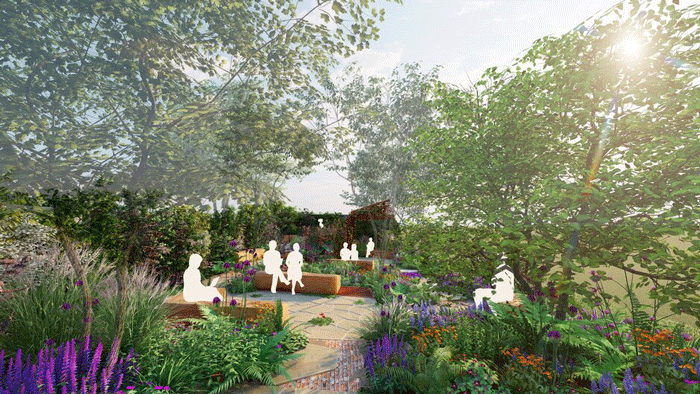 (The Octavia Hill Garden © Ann-Marie Powell)
(The Octavia Hill Garden © Ann-Marie Powell)
Pioneering social reformer Octavia Hill, a founder of the National Trust, believed that the healthy gift of air and the joy of plants and flowers were vital in everyone’s life. Designer, Ann-Marie Powell will bring to Chelsea a design conceptually located on an urban brownfield site, filled with plant-filled wildlife planting designed to stimulate physical, mental and social wellbeing. Ann-Marie has designed a garden built around open-air sitting rooms, where visitors feel like they are part of nature. Several edible species are included in planting and look out for spires of digitalis and trailing geranium creating a rich planting palette.
After the show the garden is being relocated to Bridgemere Show Gardens in Cheshire.
St James’s Piccadilly: Imagine the World to be Different
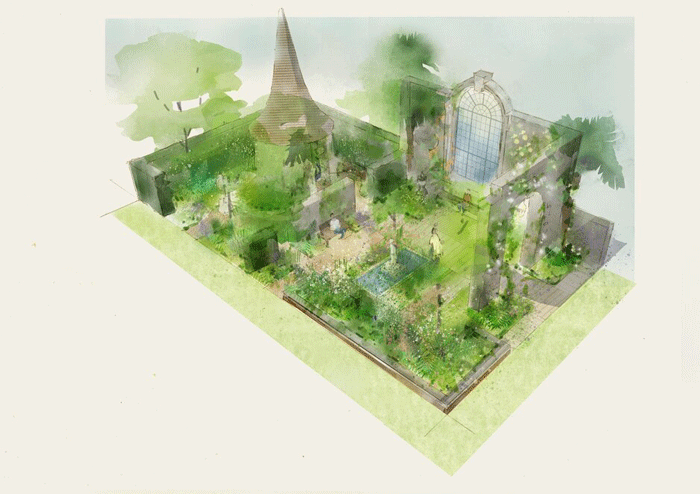 (St James’s Piccadilly, © Robert Myers)
(St James’s Piccadilly, © Robert Myers)
Designed by Robert Myers, this garden is supported by Project Giving Back and celebrates the restorative power of green spaces in cities. It’s inspired by the architecture of St James’s church in central London its bombing during the war and its existing and proposed gardens and precinct. Look out for this calm, contemplative and uplifting garden, a refuge in the city for humans and wildlife. Biodiverse woodland planting with a palette selected to evoke the garden at St James’s and the slightly eclectic planting of other urban ‘pocket parks’.
The garden will be the basis of the restored garden in Piccadilly, open to everyone, of all faiths and none.
Stroke Association’s Garden for Recovery
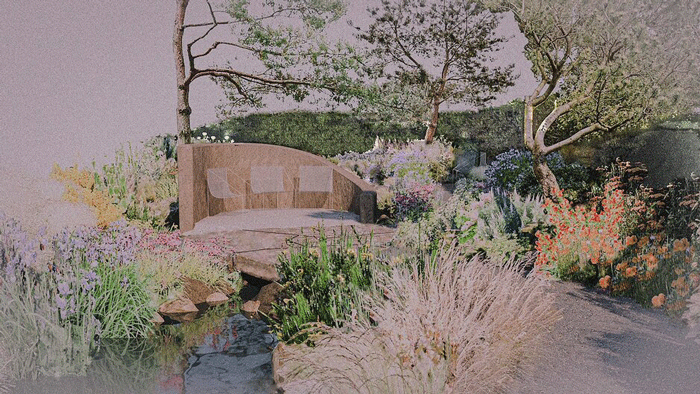 (Stroke Association Garden: © Miria Harris)
(Stroke Association Garden: © Miria Harris)
This garden is designed by Miria Harris, herself a stroke survivor and has been shaped by her story and the stories of other survivors. Sponsored by Project Giving Back supporting the Stroke Association, the garden is designed as a peaceful sensory space for recovery. Trees frame views and a complimentary colour block planting scheme of pink, orange, yellow and purple offers soft way-finding to guide visitors on different routes through the garden. After the show the garden is destined for the Stroke Unit at Chapel Allerton Hospital in Leeds.

